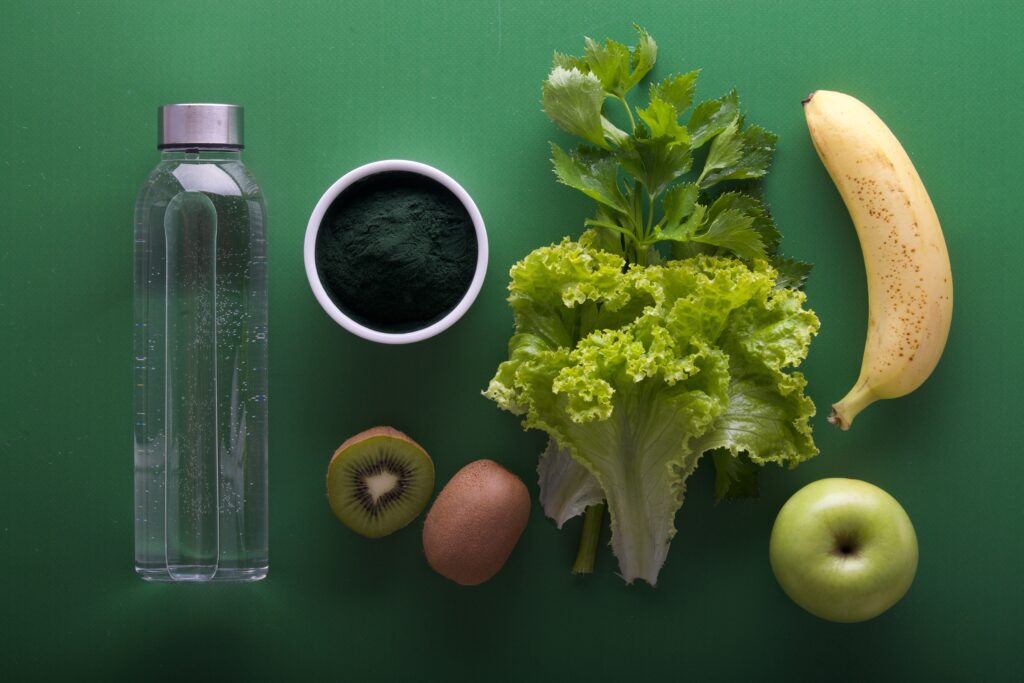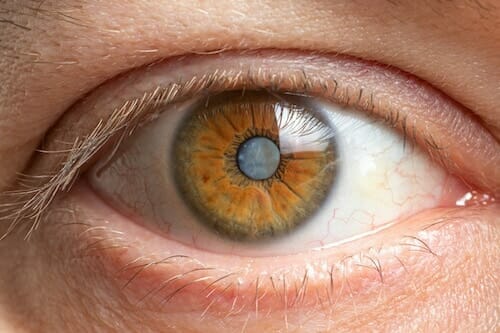Glaucoma, a group of eye conditions characterized by the progressive degeneration of the optic nerve, is a leading cause of irreversible blindness worldwide [1]. Although conventional treatments such as eye drops, laser therapy, and surgery are the primary methods for managing glaucoma [2], many patients are seeking complementary treatments to enhance their overall eye health and potentially slow down the progression of the disease.
As an ophthalmologist, I believe it is important to provide evidence-based information on complementary therapies that may benefit glaucoma patients. In this blog post, we will explore some of the most promising complementary treatments for glaucoma, including dietary changes, nutritional supplements, stress management, and more.
Dietary Changes
A healthy diet can have a positive impact on your overall health, including your eye health [3]. Consuming a balanced diet rich in fruits, vegetables, whole grains, lean proteins, and healthy fats can provide essential nutrients to support your vision [4].

Some specific dietary recommendations for glaucoma patients include:
- Leafy green vegetables: Foods high in nitrates, such as spinach, kale, and collard greens, may help improve blood flow to the optic nerve and potentially reduce IOP [5].
- Omega-3 fatty acids: Found in fatty fish like salmon, tuna, and sardines, omega-3 fatty acids may help reduce inflammation and support overall eye health [6].
- Antioxidant-rich foods: Berries, nuts, and seeds are packed with antioxidants that can help protect the optic nerve from oxidative stress and damage [7].
Nutritional Supplements
Some nutritional supplements have been studied for their potential benefits in glaucoma management. However, it is essential to consult your ophthalmologist before taking any supplement to ensure it’s safe and appropriate for your specific condition.
- Ginkgo biloba: This herbal supplement is thought to improve blood flow to the optic nerve and has been shown to have neuroprotective properties [8]. Some studies suggest that it may help slow down the progression of glaucoma, but more research is needed [9].
- Magnesium: This essential mineral may help regulate IOP and improve blood flow to the optic nerve. However, the evidence is still limited, and supplementation should only be considered under medical supervision [10].
Stress Management
Chronic stress can contribute to elevated IOP and may exacerbate glaucoma symptoms [11]. Incorporating stress management techniques into your daily routine can help improve your overall well-being and support eye health.
- Mindfulness meditation: Practicing mindfulness can help reduce stress and anxiety levels, which may have a positive impact on IOP [12].
- Yoga and gentle exercise: Engaging in regular physical activity can help lower stress and promote overall health. Consult your ophthalmologist for appropriate exercises and precautions specific to your condition [13].

Acupuncture
Acupuncture is an ancient Chinese medicine practice that involves the insertion of thin needles into specific points on the body. Some studies have found that acupuncture may help reduce IOP in glaucoma patients [14], but the evidence is still limited, and more research is needed [15].
Conclusion
While there is no substitute for conventional glaucoma treatments, complementary therapies may help support overall eye health and improve your quality of life. Always consult your ophthalmologist before starting any new treatment or making significant lifestyle changes to ensure they are safe and appropriate for your specific condition. With a comprehensive approach to glaucoma management, you can maximize your chances of preserving your vision and maintaining a healthy lifestyle.
References:
[1] Tham YC, Li X, Wong TY, Quigley HA, Aung T, Cheng CY. Global prevalence of glaucoma and projections of glaucoma burden through 2040: a systematic review and meta-analysis. Ophthalmology. 2014 Nov;121(11):2081-90. doi: 10.1016/j.ophtha.2014.05.013. Epub 2014 Jun 25.
[2] Weinreb RN, Aung T, Medeiros FA. The pathophysiology and treatment of glaucoma: a review. JAMA. 2014 May 14;311(18):1901-11. doi: 10.1001/jama.2014.3192.
[3] Chiu CJ, Chang ML, Zhang FF, Li T, Gensler G, Schleicher M, Taylor A. The relationship of major American dietary patterns to age-related macular degeneration. Am J Ophthalmol. 2014 Jul;158(1):118-27.e1. doi: 10.1016/j.ajo.2014.04.016. Epub 2014 Apr 24.
[4] Rasmussen HM, Johnson EJ. Nutrients for the aging eye. Clin Interv Aging. 2013;8:741-8. doi: 10.2147/CIA.S45399. Epub 2013 Jun 19.
[5] Kang JH, Willett WC, Rosner BA, Buys E, Wiggs JL, Pasquale LR. Association of Dietary Nitrate Intake With Primary Open-Angle Glaucoma: A Prospective Analysis From the Nurses’ Health Study and Health Professionals Follow-up Study. JAMA Ophthalmol. 2016 Mar;134(3):294-303. doi: 10.1001/jamaophthalmol.2015.5601.
[6] Downie LE, Vingrys AJ. Oral omega-3 supplementation lowers intraocular pressure in normotensive adults. Transl Vis Sci Technol. 2018 May 14;7(3):1. doi: 10.1167/tvst.7.3.1.
[7] Saccà SC, Cutolo CA, Ferrari D, Corazza P, Traverso CE. The Eye, Oxidative Damage and Polyunsaturated Fatty Acids. Nutrients. 2018 May 22;10(5):668. doi: 10.3390/nu10050668.
[8] Shi C, Zhao L, Zhu B, Li Q, Yew DT, Yao Z, Xu J. Dosage effects of EGb761 on hydrogen peroxide-induced cell death in SH-SY5Y cells. Chem Biol Interact. 2009 Sep 14;181(1):95-106. doi: 10.1016/j.cbi.2009.06.006. Epub 2009 Jun 23.
[9] Quaranta L, Bettelli S, Uva MG, Semeraro F, Turano R, Gandolfo E. Effect of Ginkgo biloba extract on preexisting visual field damage in normal tension glaucoma. Ophthalmology. 2003 Feb;110(2):359-62; discussion 362-4. doi: 10.1016/S0161-6420(02)01753-2.
[10] Gaspar AZ, Gasser A, Flammer J, Hendrickson P, Mozaffarieh M. The influence of magnesium on visual field and peripheral vasospasm in glaucoma. Ophthalmologica. 2012;228(1):26-32. doi: 10.1159/000337476. Epub 2012 May 16.
[11] Jea SY, Park KH, Kim TW, Kim JM, Park HYL, Jeoung JW, Kim SH. Factors associated with intraocular pressure before and during 9 years of treatment in the Collaborative Initial Glaucoma Treatment Study. Ophthalmology. 2015 Jan;122(1):25-35. doi: 10.1016/j.ophtha.2014.07.057. Epub 2014 Sep 19.
[12] Bohlmeijer E, Prenger R, Taal E, Cuijpers P. The effects of mindfulness-based stress reduction therapy on mental health of adults with a chronic medical disease: a meta-analysis. J Psychosom Res. 2010 Jun;68(6):539-44. doi: 10.1016/j.jpsychores.2009.10.005. Epub 2009 Nov 4.
[13] Andrade C, Srihari BS, Reddy KP, Chandramma L. Yoga for the management of pain and sleep in rheumatoid arthritis: a pilot randomized controlled trial. Indian J Psychiatry. 2017 Jan-Feb;59(1):78-83. doi: 10.4103/0019-5545.204441.
[14] Law SK, Lowe S, Law SM, Giaconi JA, Coleman AL, Caprioli J. Prospective Evaluation of Acupuncture as Treatment for Glaucoma. Am J Ophthalmol. 2015 Aug;160(2):256-265.e1. doi: 10.1016/j.ajo.2015.04.036. Epub 2015 May 9.
[15] Zhao L, Chen J, Li Y, Sun X, Chang X, Zheng H, Gong B, Huang Y, Yang M, Wu X, Li X, Liang F. The Long-term Effect of Acupuncture for Migraine Prophylaxis: A Randomized Clinical Trial. JAMA Intern Med. 2017 Apr 1;177(4):508-515. doi: 10.1001/jamainternmed.2016.9378.






About The Author: Dr Nathan Kerr
Dr Nathan Kerr is a Melbourne-based ophthalmologist and specialist in glaucoma and cataract surgery.
Dr Kerr practices in East Melbourne, Doncaster, and Vermont South.
More posts by Dr Nathan Kerr